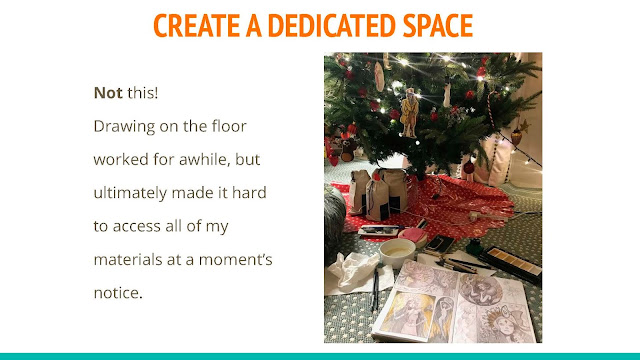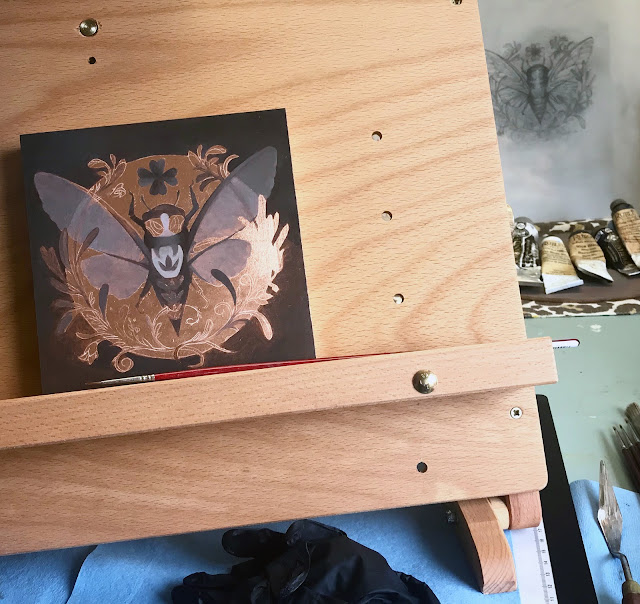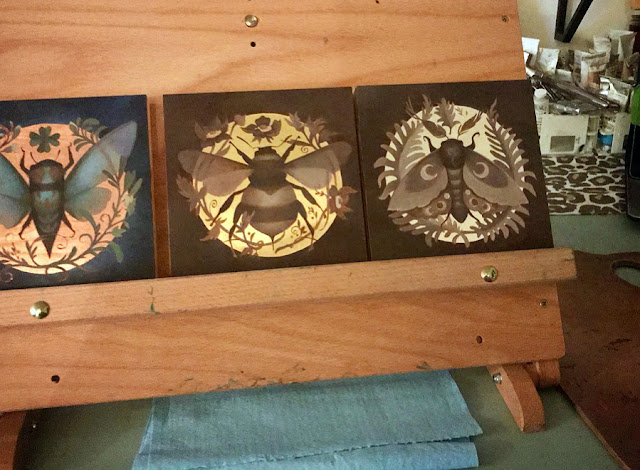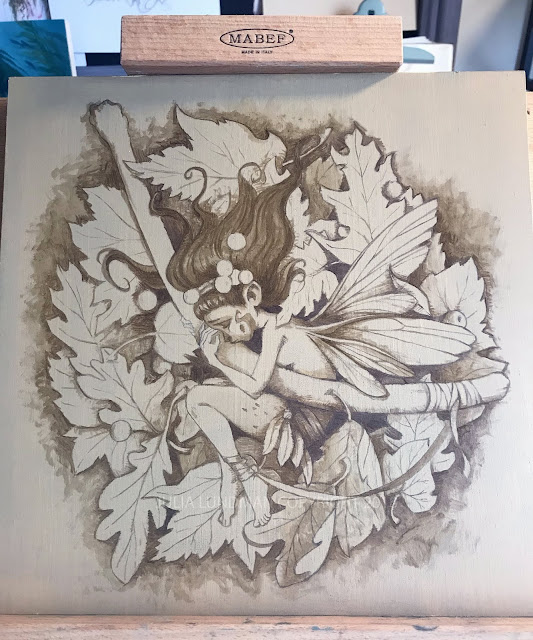I have a few narrative ideas that I am finally working on in earnest, now that I am on hiatus from studio jobs and focusing on my personal work. One of my ideas involves a reinvention and extended version of the classic, "The Little Mermaid", focusing on the story of the Sea Witch.
For this story, I wanted to fully explore who or what the Sea Witch might look like in the aesthetic I want to create. My story has a few evolutionary versions of this character, but to start I wanted to focus on what she might have looked like during the classic tale when she meets the little mermaid.
Since I haven't done a lot of creature work in my career, I thought I might dive into an online course to see where it might take me. I found a summer online course at
CGMA with Bobby Rebholz that seemed to fit the bill for a general overview of creature invention. I'm so glad I took the course.
The first thing we focused on was iterating. We put together pages of references for research and then had to come up with as many variations as we could, anything that came to mind immediately. This stage was really amusing; I could have gone on forever!
After submitting the sketches, we focused on picking out a couple of thumbnails that worked best. I had a hard time choosing and in the end regretted not choosing a few different thumbnails. However, going through the process was entirely worth it no matter what the result.
This sketch, above, for instance, seems less threatening and more benign than I would have liked to express. The design is based on a manatee, who are pretty gentle creatures, and a lion fish, which are quite poisonous.
I really like the idea of a fish that has fins that come up towards it's face when wishing to appear threatening. This variation was based on salamanders and flying fish.
After we submitted ideas for a few basic designs, we focused on iterating the head. This was the class I think I got the most out of since the head is really what the characters interact with and is so memorable and impactful in dialog scenes.
These versions (above) were really fun to draw. I looked at everything from giant squid to walruses to even bats. In the end, I decided they were too derivative of Cthulu for the sea witch I wanted for my story. In my story there is another creature of the deep that I want to be reminiscent of Chtulu, so I decided to save any mouth/head tentacles for that creature instead of this one.
^^^ this page is just me messing around, to be honest. lol
Next class we focused on a few poses for the few variants. At this point I knew the manatee like creature was not really cutting it for my story, but it was still fun to draw.
While I am not entirely sure of this ^^^ design, I do like the slinky quality it offers. I also like wispy hair and head lures that might throw off unsuspecting prey in the dark. I like bioluminescence, in general, for a Sea Witch, and tentacles of some sort for arms seem creepy. When I drew this version I was thinking about moray eels, as well, which have such great faces.
For our last class, we had to do a few studies of the final animals that we were studying as a basis of our design. I landed on the Hellbender Salamander and the Bamboo Shark as most of my inspiration points, but there were definitely some other ideas in there, too.
And the final painting of my final design for the Sea Witch.
And a few detailed head studies and a version of the witch in full light.
Although I am most likely going to edit and revise this character to fit with my story, I am glad I went through the process of taking a creature course. There were a lot of great discussions about considerations, acting, and posing that I hadn't thought about and I learned a great process for coming up with an entirely new animal.
I am unsure when I will be able to finish my story in full since I am pretty deeply in the process of creating a huge series of paintings, drawings and sketches around a fairy/dryad/seasons story at the moment. But I will keep picking away little by little on my Sea Witch story, as much as I can.
Follow me on instagram and twitter, where I post every couple of days.
Thanks for reading!
























































